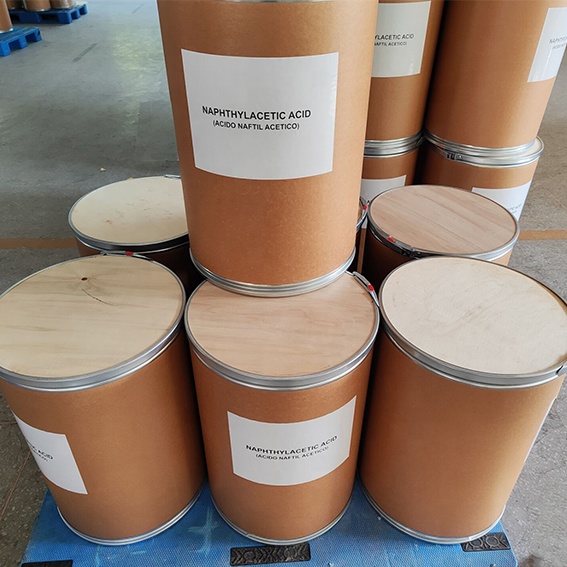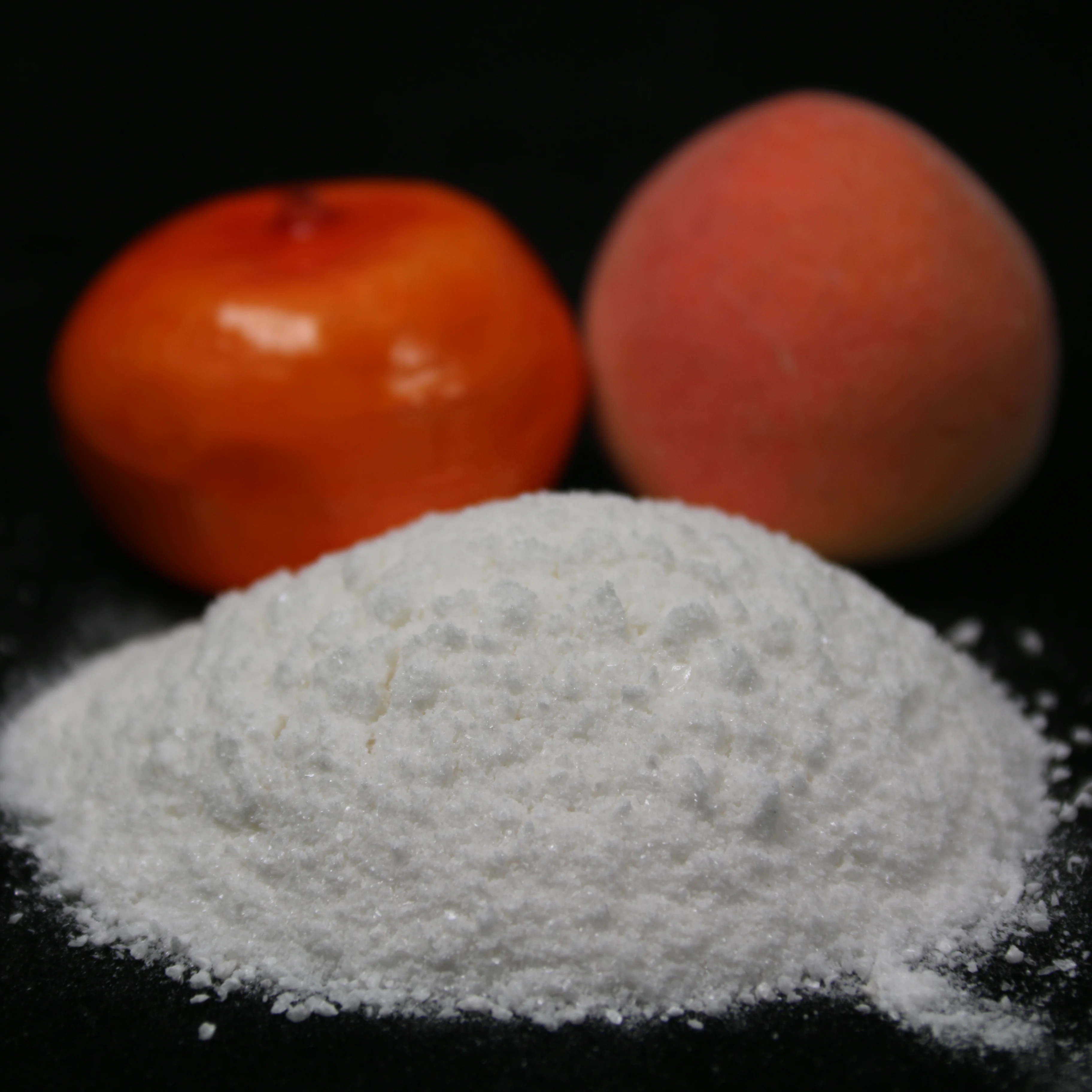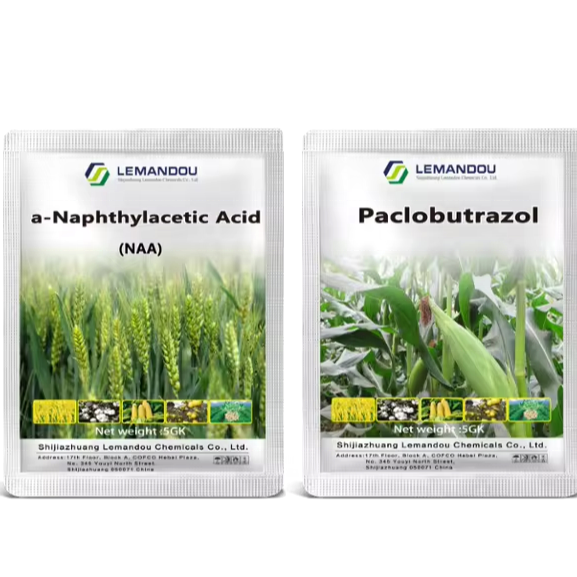Naphthylacetic acid is a plant growth regulator to promote plant root growth and an intermediate of naphthylacetamide. Naphthalene acetic acid is used as a plant growth regulator, and is used as a raw material for nasal and ophthalmic purification and ophthalmic brightness in medicine. Naphthylacetic acid can promote cell division and expansion, induce the formation of adventitic roots, increase fruit set, prevent fruit drop, and change the ratio of female to male flowers. Naphthalene acetic acid can enter the plant body through the tender skin of leaves, branches and seeds, and carry with the nutrient flow to the site of action. Commonly used in wheat, rice, cotton, tea, mulberry, tomatoes, apples, melons, potatoes, trees, etc., is a good plant growth stimulant hormone.
(1) For dipping sweet potato seedlings, the method is to soak the base of a bundle of potato seedlings 3cm in the liquid medicine, the concentration of soaking seedlings 10~20mg/kg, for 6 hours;
(2) Soak the root of rice seedlings at a concentration of 10mg/kg for 1 to 2 hours during rice transplanting; It is used for seed soaking on wheat, the concentration is 20mg/kg, the time is 6-12 hours;
(3) Spraying on the leaf surface of cotton during the flowering period, the concentration of 10 to 20mg/kg, and spraying 2 to 3 during the growth period should not be too high, otherwise it will cause the opposite effect, because the high concentration of naphthalene acetic acid can promote the production of ethylene in the plant;
(4) When used to promote roots, it should be mixed with indoleacetic acid or other agents with root promoting effect, because naphthalene acetic acid alone, although the root promoting effect of crops is good, but the seedling growth is not ideal. When spraying melons and fruits, it is appropriate to spray evenly wet the leaf surface, the general spray liquid amount of field crops is about 7.5kg/100m2, and fruit trees are 11.3 ~ 19kg/100m2. Treatment concentration: 10 ~ 30mg/L spray for melons and fruits, 20mg/L soak for 6 ~ 12h for wheat, 10 ~ 20mg/L spray for 10 ~ 20mg/L at flowering stage 2 ~ 3 times. This product can be mixed with general insecticides, fungicides and chemical fertilizers, and the effect is better in fine weather without rain.
Collapse and edit this safety information
Folding risk terms
R22:Harmful if swallowed. R22:Harmful if swallowed.
Folding safety terms
S24/25:Avoid contact with skin and eyes. Avoid contact with skin and eyes.
Folding dangerous goods mark
XnXiC
Collapse to edit the system number of this paragraph
CAS number: 86-87-3
EINECS number: 201-705-8
Safety information
Customs Code: 2916399090
WGKGermany: 3
Danger category code: R22
Security description: S26-S36-S24/25-S36/39-S22-S23
RTECS number: QJ0876000
Dangerous Goods mark: Xn:Harmful
Customs data
China Customs (2916399090) More >>
Overview 2916399090 Other aromatic monocarboxylic acids. VAT rate :17.0% Tax rebate rate :9.0% Regulatory conditions: None MFN tariff :6.5% General tariff :30.0%
Summary2916399090 other aromatic monocarboxylic acids, their anhydrides, halides, peroxides, peroxyacids and their derivatives VAT:17.0% Tax rebate rate:9.0% Supervision conditions:none MFN tariff:6.5% General Trade-related: 30.0%
Composite route
Synthetic route (51 in total) More >>
86-52-2
1-chloromethylnaphthalene
~ 85%
86-87-3
Naphthylacetic acid
Details >>
2122-70-5
Alpha-naphthalene acetate
~ 93%
86-87-3
Naphthylacetic acid
Details >>
Carbon dioxide
~ 98%
86-87-3
Naphthylacetic acid
Details >>
Upstream and downstream products
Upstream products (48 in total) More >>
86-52-2
1-chloromethylnaphthalene
2122-70-5
Alpha-naphthalene acetate
2876-78-0
Methyl 1-naphthalene acetate
773-99-9
2-(1- naphthyl) ethanol
Downstream products (68 in total) More >>
3243-42-3
3-(1-naphthyl) propionic acid
34800-90-3
1-naphthyl hydrazine
55-86-5
1-naphthoic acid
4780-79-4
1-naphthalenyl alcohol
5121-00-6
Naphthalene-1-acetyl chloride
Post time: Jul-08-2024








